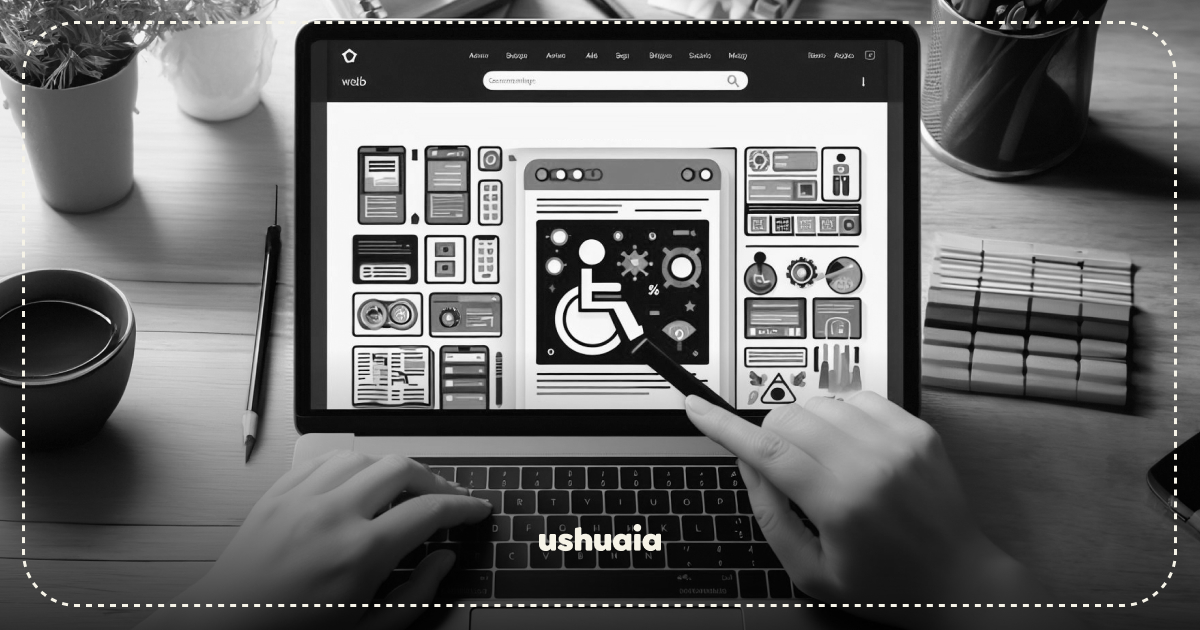- Home
- Resource Center
- Articles & Videos
- How Website Accessibility Can Positively Impact Search Engine Optimization
1 April 2024
| by Ushuaia Solutions
How Website Accessibility Can Positively Impact Search Engine Optimization

Web accessibility and search engine optimization are two sides of the same coin. Although these two concepts are generally considered separate, they are actually surprisingly intertwined. If we want to improve our site’s searchability and reach a wider audience, it is essential to pay attention to both, as they share a fundamental goal: improving the user experience.
Many features that enhance accessibility also help boost the visibility of digital content. As a general rule, accessible websites are easier for search engines to crawl and index. For us in the localization industry - where it is all about conveying messages across and reaching international audiences - this knowledge is essential.
Let's examine how accessibility and search engine optimization are closely related and how they positively impact each other.
What Is Accessibility and Why We Should Care About It
Accessibility is an inclusive approach that aims to remove all obstacles in communication. In this sense, it is closely related to localization.
Accessibility seeks to create an environment in which everyone can participate without any difficulty. According to the Web Accessibility Initiative, “When the web meets this goal, it is accessible to people with a diverse range of hearing, movement, sight, and cognitive ability.” This means that people can perceive, understand, navigate, interact with, and contribute to the web or platform.
Everyone deserves equal access to the digital world without discrimination or restrictions. Websites, apps, and tools should be designed to work for everyone, regardless of their hardware, software, language, location, or ability. To facilitate web accessibility, the World Wide Web Consortium (W3C) develops policies, standards, and supporting resources. As part of their mission, they provide a list of accessibility principles for websites, apps, games, and online platforms. At Ushuaia Solutions, we followed these recommendations when creating our new website.
Accessibility benefits individuals, businesses, and society as a whole. According to the World Health Organization, 16% of the world’s population experience significant disabilities. That means that one out of every six people will not receive or understand a message unless the content is made accessible. Web accessibility is useful not only for people with disabilities, but for many other groups as well. It can improve the user experience for all users, including those without disabilities, resulting in better search rankings.
What Is SEO and Why It Is Important
As you may probably know, SEO involves a series of strategies aimed at improving a website and increasing its visibility in search engines, such as Microsoft Bing, Baidu and of course, the most popular one, Google.
SEO fundamentals are similar across most search engines. These systems crawl, index, and rank web content to display it in an ordered fashion based on user queries and many different factors. Unfortunately, there's no specific guide to fully understand the algorithms that search engines use. To help comprehend ranking factors, Google offers some useful resources, such as Search Console, the official Google Search Central blog, and the discussion forum.
In broad terms, there are three types of strategies oriented to increasing online visibility. First, technical SEO refers to improving all technical aspects (URL structure, navigation, and internal linking). Second, on-site SEO refers to practices that improve the content of a website for both search engines and users. Last but not least, off-site SEO is all about enhancing brand awareness and recognition (brand assets, slogans, values, color palettes, and so on).
SEO is a complex and fascinating world. It involves different technical and creative processes. Many professionals contribute to the development and implementation of these strategies, from back-end and front-end developers to copywriters and graphic designers. Being familiar with all these factors is also crucial when localizing a website.
How Web Accessibility and SEO Are Related
Curious as it may sound, many of the recommendations made to improve search visibility can also improve web accessibility.
Here's a list of some of the most important factors that can make a webpage both more accessible and rankable.
1- Good structure and use of headings
Hierarchization is a must for web accessibility and search engine optimization. It's important to structure the pages into clear sections and to use <h1>, <h2>, <h3>, and other heading tags correctly.
As far as accessibility is concerned, well-structured pages are easier for screen readers to analyze. In addition, headings improve the overall user experience. They facilitate the scanning of the content and help users identify those sections that are more relevant to them.
In terms of SEO, headings are a strategic place to put keywords and key phrases. These words should be chosen after a detailed analysis of the audience and their queries (search volume, competition, usage, etc.). The ideal keyword density is around 1 to 2%, so we need to strategically choose the places where the keywords should appear.
2- Meaningful and descriptive page titles
A page title is written between the <title> tags. Simply put, it is the name of a web page. It appears at the top of the tab, usually accompanied by a small image or logo of the company. GALA's website, for example, displays the GALA logo.
Descriptive page titles help to improve SEO as they are easier for browsers to identify and index. People with disabilities can also understand the websites better if they have a good page title. For instance, when a screen reader arrives at a web page, it reads the page title out loud. If it's not easily recognizable to the user, they may close the tab and assume they are on the wrong page.
3- Useful anchor texts
Anchor text, also known as link text, is the visible and clickable text on a link. It is usually highlighted, underlined, or appears in a different color than the surrounding text.
It's very common for UX writers and website developers to use words such as "click here" in an anchor text, but this is not considered a good practice. Web accessibility guidelines recommend using descriptive and meaningful anchor text. This helps both screen reader users and search engines understand the relevance of the link.
4- Descriptive alt texts
Alternative text is used to briefly explain the visual content of a document or website. It's important to pay attention to this feature as alt text is indexed by search engines and is also read aloud to users by screen reader software. Moreover, if the image fails to load, the alt text will be displayed on the page.
That's why it's important to add alt text to all non-decorative images. The alt text should be short and descriptive.
5- XML sitemaps
Sitemaps help web visitors understand how the content is organized. It's highly beneficial for both accessibility and SEO.
They usually show a website's most important pages in hierarchical order. Sitemaps make it easy for search engines to crawl and index a website and identify the most relevant content for a given query.
As far as accessibility is concerned, sitemaps are useful as they give users an alternative way to navigate the website: the ‘page of contents’. This helps people with cognitive difficulties because they can see all the information in a page of text without other distracting content. In addition, sitemaps can help screen reader users to reach the content that they need faster.
SEO and Web Accessibility, A Website’s Best Friends
Both accessibility and SEO prioritize the user experience. By following accessibility best practices and guidelines, we can also reduce bounce rates and increase engagement and time on the page. All of this would result in better SEO performance. In addition, failure to comply with accessibility guidelines can sometimes lead to legal consequences and reputational damage.
Thanks to new developments in assistive technology and digital developments, complying with accessibility principles is neither difficult nor expensive.. Moreover, the overlap between SEO and accessibility makes investing in both highly beneficial.
Do you want to contribute with an article, a blog post or a webinar?
We’re always on the lookout for informative, useful and well-researched content relative to our industry.

Malén D'Urso
Malén is Communications Specialist at Ushuaia Solutions. She is an English to Spanish translator and copywriter with a Bachelor’s Degree in Social Communication. When she’s not creating content marketing strategies, she enjoys reading short novels and going camping.


